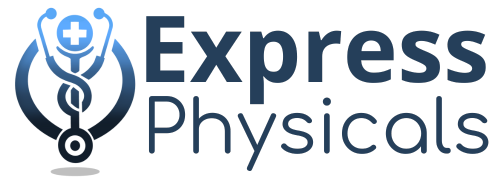Can you pass a DOT physical with high blood pressure?
Yes. But there’s more to the story than just a simple yes or no. The DOT physical exam is built to assess your safety on the road—and that means taking a close look at your cardiovascular health, especially your blood pressure.
Why Blood Pressure Matters in a DOT Exam
If you’re behind the wheel of a commercial vehicle, you’re responsible for thousands of pounds of machinery. The DOT wants to ensure that your body can handle the demands of the job—including long hours, physical strain, and mental focus. Elevated blood pressure can lead to sudden health events that could endanger you and others on the road.
DOT Guidelines on Blood Pressure
According to the FMCSA’s medical requirements, the guidelines for blood pressure assessment in DOT physicals are broken down into ranges. These ranges help determine how long your medical certification is valid and whether follow-up is needed.
- Normal: Less than 140/90 – certified for 2 years
- Stage 1 Hypertension: 140-159/90-99 – certified for 1 year
- Stage 2 Hypertension: 160-179/100-109 – possible 3-month certificate
- Stage 3 Hypertension: 180+/110+ – disqualified until reduced to acceptable levels
Source: FMCSA Medical Examiner Handbook
The Challenge: Managing Blood Pressure Before Your Exam
If you already know you have hypertension, the challenge becomes clear: will your numbers be within the range needed to pass? The DOT isn’t trying to keep you off the road—they’re making sure you’re fit to drive without putting yourself or others in danger.
And let’s face it—getting your blood pressure under control isn’t always easy. Stress, lack of sleep, diet, or even the anxiety of the exam itself can elevate your numbers on test day.
What Happens if You’re Borderline?
You’re not alone. Many drivers come in close to the edge of the acceptable range. Medical examiners know this. If you’re just over 140/90, the CME may recheck your reading after a short rest period. If you’re consistently elevated, the CME may issue a shorter certificate or request documentation from your treating physician.
Getting Ahead of the Problem
Let’s climb the Yes-Ladder together:
- Yes—you want to keep your CDL.
- Yes—you understand the risks of uncontrolled blood pressure.
- Yes—you’re willing to take control of your health.
If you answered yes, you’re on the path toward passing that physical. Here’s how to take that commitment and make it count.
Steps to Improve Your Blood Pressure Before the DOT Exam
- Track your readings regularly: Invest in an at-home blood pressure monitor. Keep a log and share it with your doctor or bring it to your DOT exam. Patterns matter more than one-time readings.
- Limit sodium and processed foods: Salt is one of the biggest contributors to high blood pressure. Replace canned soups, fast food, and snacks with fresh, whole foods. Read labels and aim for less than 1,500mg of sodium per day if you’ve already been diagnosed with hypertension.
- Hydrate and avoid caffeine and nicotine before your exam: Dehydration and stimulants can cause temporary spikes in blood pressure. Drink plenty of water, and avoid coffee, energy drinks, and cigarettes at least 2 hours before your physical.
- Exercise regularly: You don’t need to run marathons. Even 30 minutes of walking, stretching, or light resistance training five days a week can improve your cardiovascular health and lower blood pressure over time.
- Get plenty of sleep: Sleep is your body’s time to reset. Poor sleep increases your risk for high blood pressure. Aim for 7-9 hours of quality rest each night, especially before exam day.
- Take medications as prescribed: Skipping doses—even occasionally—can cause your pressure to climb again. If you experience side effects, speak with your doctor rather than stopping the medication.
Documentation That Helps You Pass
If you’ve been treated for hypertension, bring written documentation from your doctor. This should include:
- A list of current medications
- Your average blood pressure readings over the past month
- Confirmation that your condition is under control and monitored
Providing this helps the Certified Medical Examiner make an informed decision—and can be the difference between a short certificate and a full one.
When You’re Disqualified—But Not Done
If your blood pressure is too high to be certified at the time of your physical, you’re not out of options. You’re allowed to return after lowering your blood pressure to an acceptable level. Many drivers are certified within a few weeks after rechecking with their CME. Make it your short-term mission: stabilize your numbers and come back strong.
Your Commitment to Health and Career
Hypertension is common—but manageable. With the right mindset, routine, and documentation, you can pass your DOT physical—even if your numbers have been high in the past. It starts with a commitment—to your health, your job, and your safety on the road.
Yes, it’s worth it. Yes, you can do this. And yes—passing your DOT physical with controlled blood pressure is within reach.
